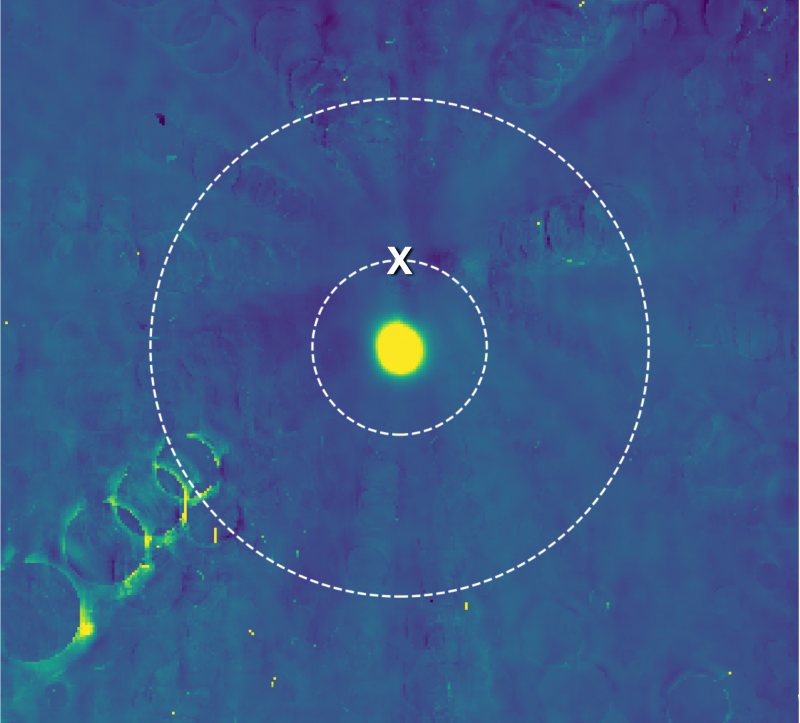
New Horizons – the same craft that made humanity’s first-ever visit to Pluto in 2015 – is now just days away from its next target, a Kuiper Belt object a billion miles beyond Pluto, nicknamed Ultima Thule. NASA said before Christmas that – after a three-week search – it found no apparent obstacles in the spacecraft’s optimal path, no rings, no small moons, no potential hazards. Thus New Horizons is now aimed on that optimal path for its January 1, 2019, encounter with Ultima Thule. And you can start watching now!
It will be another first for New Horizons, the farthest planetary flyby in human history.
NASA TV and the NASA New Horizons social media channels are now online. The New Horizons mission will also provide coverage of live activities on this website and the Johns Hopkins Applied Physics Laboratory YouTube channel. Click here for a schedule of events. You’ll find several on December 31 and more on January 1.
Follow the New Horizons mission on Twitter and use the hashtags #UltimaThule and #UltimaFlyby to join the conversation.
Live updates will be also available on the mission Facebook page.
There are a couple of more links to events in the tweets below:
On #NewYearsEve, @NASANewHorizons will perform the most distant planetary flyby ever as it zooms past an object nicknamed #UltimaThule. Make sure to follow our partner @JHUAPL for updates: https://t.co/f3IkfRXZ1H pic.twitter.com/MXkAyLz3Bq
— NASA New Horizons (@NASANewHorizons) December 26, 2018
The spacecraft’s path will take it about 2,200 miles (3,500 km) from Ultima Thule, instead of a hazard-avoiding detour that would have pushed it three times farther out. The last opportunity to maneuver the spacecraft onto another trajectory was December 18.
As New Horizons gets closer to Ultima Thule (which is officially designated 2014 MU69) the mission’s science team is puzzling over the light reflected from this object.
The spacecraft has been taking hundreds of images to measure Ultima’s brightness, but these recent measurements appear to be at odds with a 2017 observation, made when Ultima Thule covered (occulted) a star as seen from Earth. That 2017 observation suggested that Ultima Thule might be not one, but two bodies orbiting around each other. If there aren’t two objects there, the science team said in 2017, then this little Kuiper Belt object might have a pronounced elongated shape.
Missed today's Facebook Live with the @NASANewHorizons team on the #UltimaThule NYE flyby? You can watch it all here: https://t.co/CRIxRsGJln @NASA @AlanStern
— Johns Hopkins APL (@JHUAPL) December 28, 2018
Now scientists aren’t sure what to think, since repeated observations over the past three months haven’t revealed the variations in brightness they’d expect from two bodies, or from a spinning elongated body. Those variations in brightness are what scientists call a light curve. New Horizons principal investigator Alan Stern of the Southwest Research Institute (SwRI) in Boulder, Colorado, commented in a statement:
I call this Ultima’s first puzzle – why does it have such a tiny light curve that we can’t even detect it? I expect the detailed flyby images coming soon to give us many more mysteries, but I did not expect this, and so soon.
There are various possible explanations, including that Ultima Thule’s rotation pole may be aimed right at or close to the incoming spacecraft. Or Ultima Thule may be surrounded by a cloud of dust that obscures its light and makes the observations difficult to read. University of Virginia’s Anne Verbiscer, a New Horizons assistant project scientist, suggested an even stranger possibility:
Ultima [may be] surrounded by many tiny tumbling moons. If each moon has its own light curve, then together they could create a jumbled superposition of light curves that make it look to New Horizons like Ultima has a small light curve.
While that explanation is also plausible, she added, it has no parallel in all the other bodies of our solar system.
New Horizons will make its historic close approach to Ultima Thule at 05:33 UTC (12:33 a.m. EST; translate UTC to your time) on January 1, 2019. Stern commented:
The spacecraft is now targeted for the optimal flyby, over three times closer than we flew to Pluto. Ultima, here we come!
EarthSky lunar calendars are cool! They make great gifts. Order now. Going fast!

For more information on the New Horizons mission, including fact sheets, schedules, video and images, visit: https://www.nasa.gov/newhorizons and https://pluto.jhuapl.edu.
Bottom line: New Horizons spacecraft is just days away from its January 1, 2019, encounter with its next target, a Kuiper Belt object known as Ultima Thule. This post contains links to schedules for events and social media.











